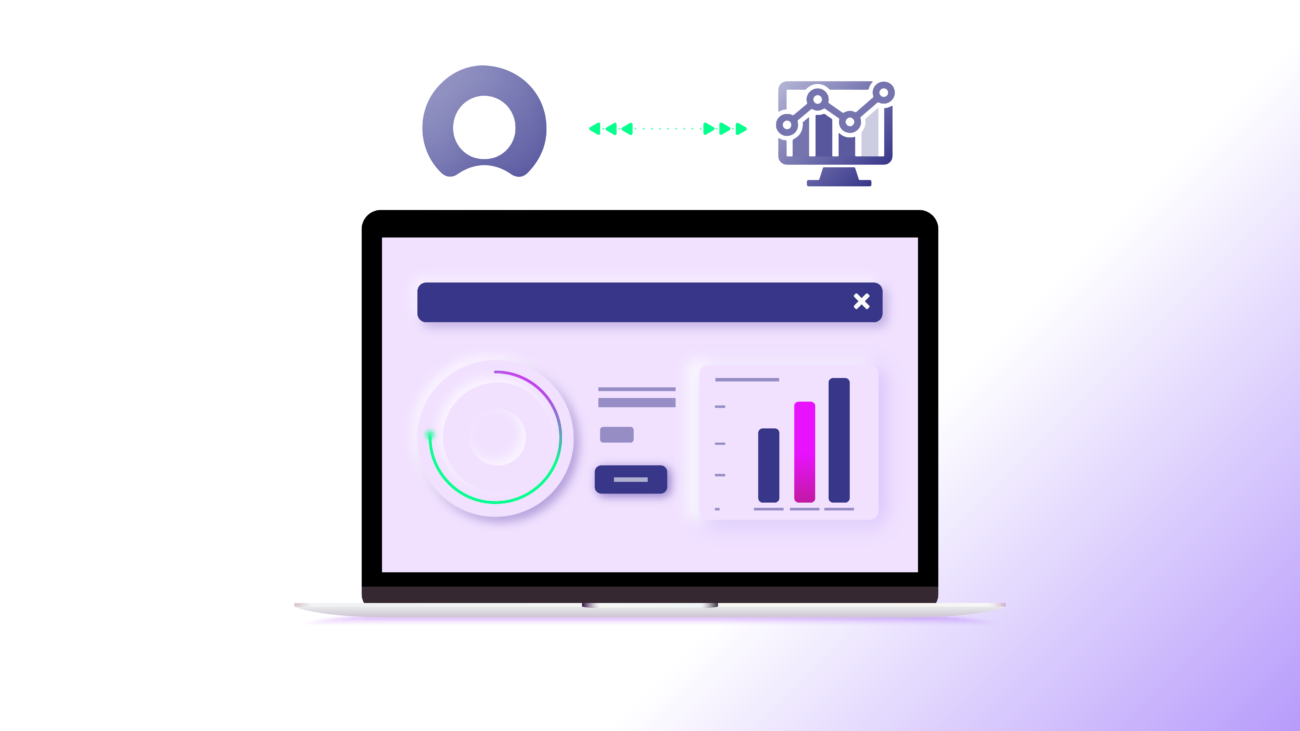This blog post was written by Anton Storozhuk, CEO at AlphaServe.
Tableau ServiceNow integration equips organizations with expanded reporting functionalities to generate customized ServiceNow reports and build rich data visualizations crucial for complex, in-depth analysis.
ServiceNow’s reporting capabilities face two significant limitations. First, they only display the current state of data within the ServiceNow instance without capturing historical data trends or changes over time.
Secondly, they do not allow for the integration of multiple external data sources. This limitation stops organizations from building intricate, composite reports that can provide more comprehensive insights. As a result, they can fail to meet their specific and often complex reporting requirements.
Although these limitations exist within ServiceNow’s own system, leveraging Tableau can help overcome them while offering advanced reporting capabilities. And to make the transition smoother, we will look at an easy and streamlined method to export ServiceNow data to Tableau. That can aid your journey toward enhanced data reporting and visualization.
This guide provides detailed instructions for configuring ServiceNow Tableau integration, which enables organizations to take advantage of data analysis and acquire knowledge from a comprehensive perspective of their ServiceNow data.
So let’s get right to it!
Jump to:
- When to Integrate Tableau and ServiceNow
- What is Tableau ServiceNow Connector
- How to Connect Tableau to ServiceNow
When to Integrate Tableau and ServiceNow
The tactical integration of Tableau and ServiceNow can provide organizations with substantial benefits in their efforts based on data. ServiceNow Tableau integration offers organizations a powerful solution for managing and visualizing data.
Tableau’s advanced data visualization tools and ServiceNow’s comprehensive data management features enable organizations to extract maximum value from their data, navigate the information landscape, and make real choices based on relevant information.
ServiceNow integration with Tableau can provide organizations with helpful knowledge of essential metrics such as the time it takes to resolve incidents, the rate of successful service request fulfillment, the success rate of changes, and compliance with service level agreements.
Organizations can monitor customer satisfaction, employee performance, and resource utilization metrics to enrich their business operations. IT professionals can make statistically informed choices that improve IT service management by analyzing trends and identifying bottlenecks.
Consider ServiceNow and Tableau integration when:
Optimizing Service Management Process
When organizations focus on optimizing their processes to streamline service management, obtain actual time facts into service performance, and implement proactive measures for improvement, integrating Tableau and ServiceNow becomes a viable option. The integration allows organizations to convert detailed data into dynamic charts and graphs, aiding in making reliable choices by enhancing awareness of the data and providing practical information.
Improving Data Accessibility
The integration of Tableau and ServiceNow enables organizations to streamline their data collection process by integrating information from various data sources. This integration also facilitates easy access to customer data, thereby enhancing the efficiency of data analysis and management. It allows users to obtain precise and up-to-date information in real time.
Customizing Reports and Dashboards
Tableau integration with ServiceNow streamlines the complicated process of generating detailed reports and dynamic dashboards. The ability to create adopted reports and graphs is a valuable feature for organizations to develop further their data analysis and reporting strategies. By doing so, they can ensure that the displayed KPIs and metrics correspond with their unique requirements. Additionally, this information’s visual presentation is appealing to the eye and simple to understand for users.
Increasing Collaboration and Data Sharing
The integrated approach of Tableau and ServiceNow enables efficient teamwork and information exchange across various units and divisions. Reports, dashboards, and insights may be easily shared by users, encouraging a culture that values data and improving collaboration.
Boosting IT Operations
The integration of Tableau and ServiceNow allows organizations to conduct a comprehensive analysis of their IT operational data, which can help optimize their IT operations. The integration mentioned here enables the identification of areas that require improvement and streamlining processes such as incident management, problem management, and change management.
What is Tableau ServiceNow Connector
Tableau Connector for ServiceNow, developed by acSoft Inc, a subsidiary of Alpha Serve, is an advanced tool that enables effortless and effective integration of ServiceNow with Tableau.
Available on the ServiceNow Store, this app enables organizations to integrate data by exporting ServiceNow tables and fields that offer flexibility and completeness in combining information. Integrating Tableau’s advanced data visualization and reporting features with an organization’s ServiceNow instance allows for build-up data analysis and reporting processes.
Key Features of Tableau Connector for ServiceNow
Tableau Connector for ServiceNow is an appealing choice for using the capabilities of both platforms since it possesses a number of critical features.
Simplified Data Extraction
Exporting ServiceNow tables and fields to Tableau has been simplified for users. Users can now select the desired tables and fields without requiring any complicated encoding or manual data extraction. The connector interface is designed to be easy to use, which alleviates the process of extracting data from ServiceNow.
Dynamic ServiceNow Dashboards
For teams in IT, support, or other areas, the connector makes it easier to create real-time Tableau dashboards that show key performance indicators (KPIs). The dashboards offer a means of obtaining real-time facts about a team’s performance. It enables organizations to keep track of their overall performance, monitor progress toward their goals, and identify areas that require improvement. The statement highlights the positive impact of promoting transparency, collaboration, and data utilization in developing decisions.
Combined ServiceNow Reporting
The connector enables organizations to generate all-inclusive reports in Tableau by merging data from different ServiceNow processes, such as incident management, problem management, etc. Integrating ServiceNow data with other systems such as CRM, ERP, Jira, and others can give organizations in-depth awareness of their operations. It can enable them to make informed choices based on a statistical data analysis.
Integrated Dot-Walking Mechanism
The mentioned feature enables users to efficiently retrieve and incorporate data fields from associated tables while exporting data to Tableau. Dot-walking is a technique that allows users to access and combine data from various tables within the ServiceNow instance by navigating relationships between them using dot notation. The tool permits users to seamlessly export data from multiple related tables, thereby increasing the adaptability and depth of their visual representations and reports, resulting in a more profound understanding and precise representation of information in Tableau.
Well-Thought-Out App Architecture
The architecture of the Tableau Connector for ServiceNow has been constructed to help with the export of vast quantities of ServiceNow data without causing any negative impact on the performance of your ServiceNow instance. The architecture is optimized to facilitate the extraction and transfer of data to achieve seamless integration between ServiceNow and Tableau. It enables organizations to handle large data sets without affecting the effectiveness and responsiveness of their ServiceNow setting, thereby improving their confidence when interacting with such data.
Advanced Data Security
The connector prioritizes data security and governance. ServiceNow Tableau Connector dispersed user roles to manage data access and security. There are three roles: Admin, Editor, and Viewer. The ServiceNow system admin determines users’ roles and permissions to export ServiceNow tables. Admin role has the most access, including reading, writing, creating, and deleting data sources. Editors can only read, write, and create data sources. Tableau Viewer cannot edit data sources but can export ServiceNow data to Tableau.
How to Connect Tableau to ServiceNow
The integration of Tableau’s data visualization and analytics capabilities with the data stored in ServiceNow can be achieved by organizations through a series of simple bending steps.
For a comprehensive understanding and detailed instructions, you can visit the app’s documentation.
Step 1: Install the Tableau Connector for ServiceNow
You can easily install the Tableau Connector for ServiceNow from the ServiceNow Store with system admin rights and HI credentials.
Since it requires no prerequisites, the Tableau Connector for ServiceNow is practical as it is a standalone app. The connector installs and applies without dependencies or configurations for a seamless experience.
To install the app visit the Tableau Connector on the ServiceNow Store.
Click the “Request an app” button and use your HI credentials to log in. Once the app is requested, you will receive instructions via email. The email will point you to the Installation Overview page.
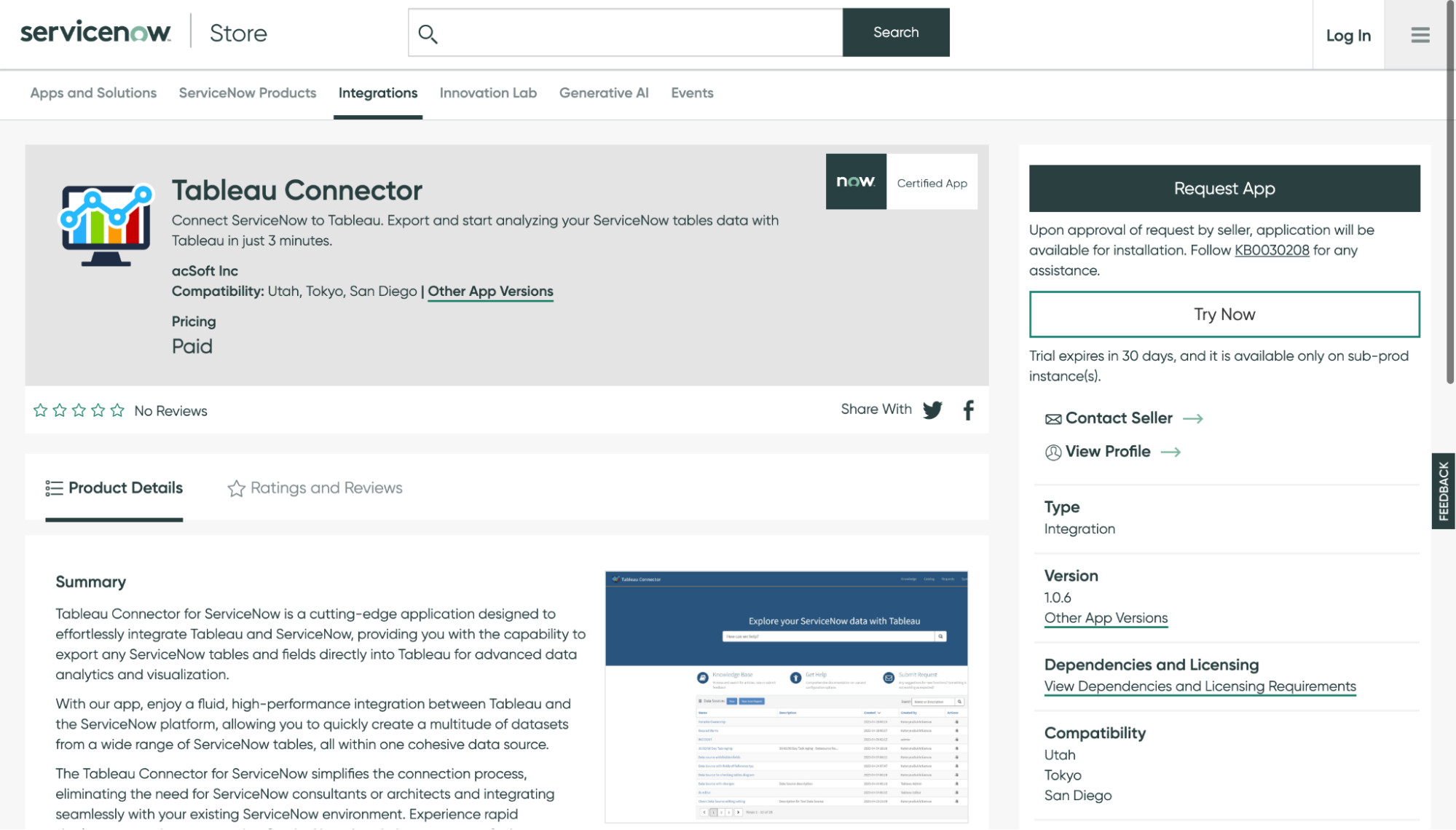
Users should access the System Applications section and select All Available Applications > All to locate and install the Tableau Connector for ServiceNow.

From there, they can use the filter criteria or search bar to narrow your search, find the Tableau Connector for ServiceNow, and click Install. Upon installation, users can access the connector through the menu.
Step 2: Assign Tableau Connector Roles to Users
The Tableau Connector for ServiceNow has specific responsibilities that ServiceNow System Administrators can assign to users to enable them to use it.
To assign roles and provide users with the required access, find the user to whom you wish to give the Tableau Connector role in the Users table.
Clicking on the user’s User ID will reveal their profile for modification.
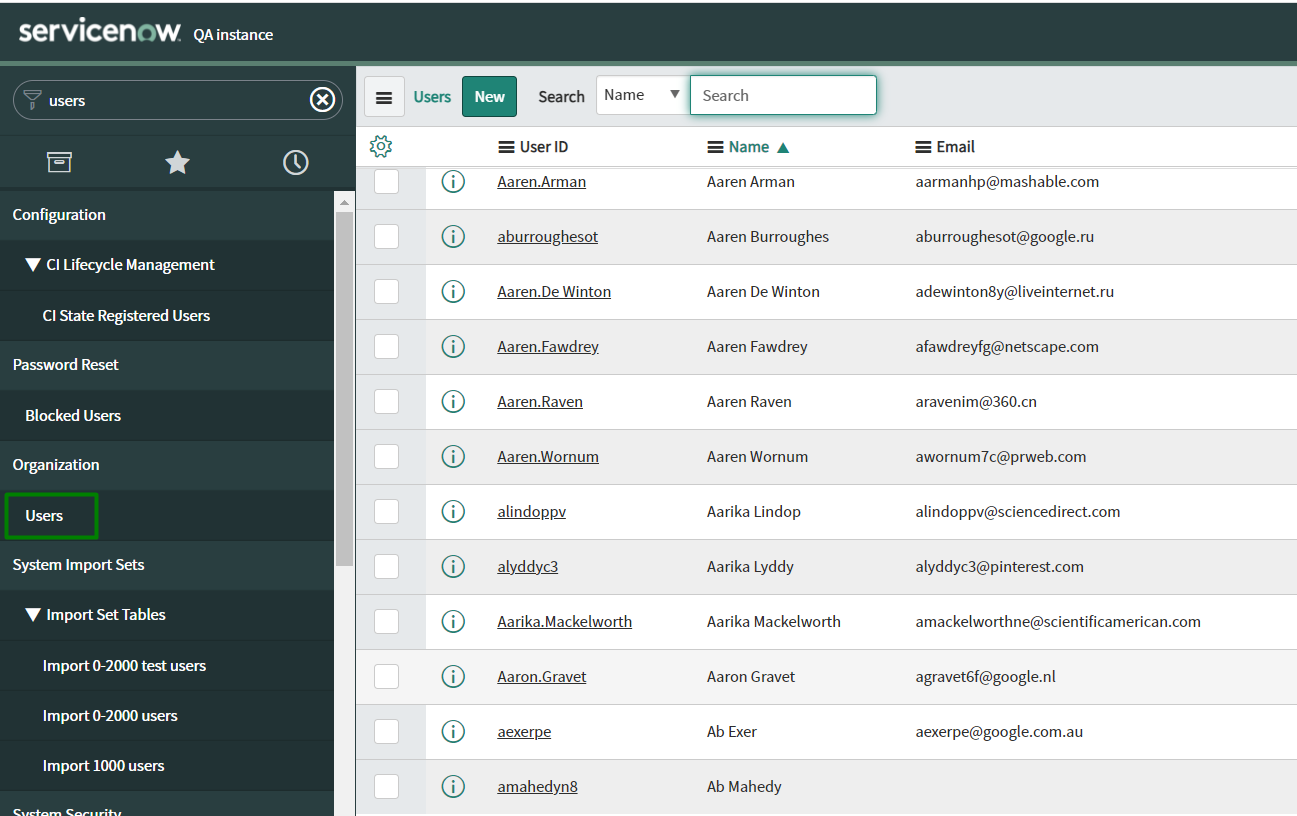
Click the Edit button after switching to the Roles tab. ‘x_acsof_tableau’ should be typed into the Collection search area.
The search returns three roles for Tableau Connector for ServiceNow. Move the necessary roles to the Roles list by choosing them from the Collection. After clicking Save, update the user.
Users will be given the appropriate permissions to operate with the Tableau Connector for ServiceNow by giving them specific roles, enabling them to take full advantage of its capability.
Step 3: Create a Data Source in ServiceNow
To create a Data Source using the Tableau Connector for ServiceNow, the user must have either the TABLEAU ADMIN or TABLEAU EDITOR role assigned (refer to Step 2 for more details).
These roles provide the necessary permissions and access rights to configure and manage Data Sources within the connector.
- To Create Data Source using Service Portal Instance-Name.service-now.com/sp:
Within the ServiceNow interface’s Tableau Connector, scroll down to find the Data Sources table. After locating the Data Sources table, select New by clicking.
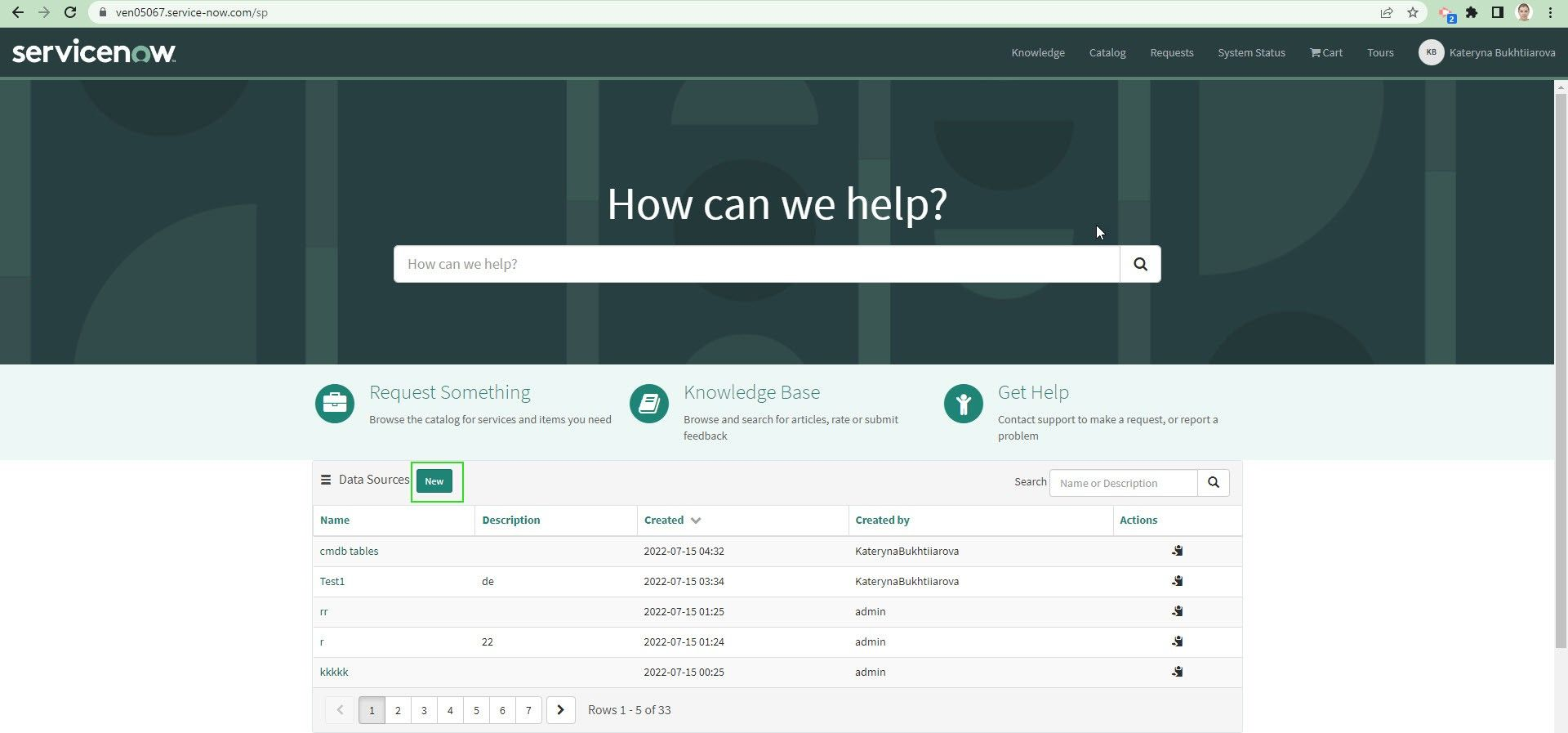
- To Create Data Source using Tableau Connector page Instance-Name.service-now.com/tableau_connector:
To initiate creating a new data source in Tableau, navigate to the Tableau Connector page and locate the New button.
Click on it to proceed. To properly set up the Data Source, it is necessary to complete all the required fields with the relevant information: Data Source name, Description (optional), Rows limit, Disable editing for other users, and set Use display value.

To configure the Export settings, click the Add Table button and start typing the table name in the search field, or scroll through the list to find the desired table you want to export.
Once selected, click the Add button.
After adding the table, select the specific fields needed for your reports. You can export any ServiceNow tables and fields, including custom ones. If necessary, enable the Use display value option to export data in string format.
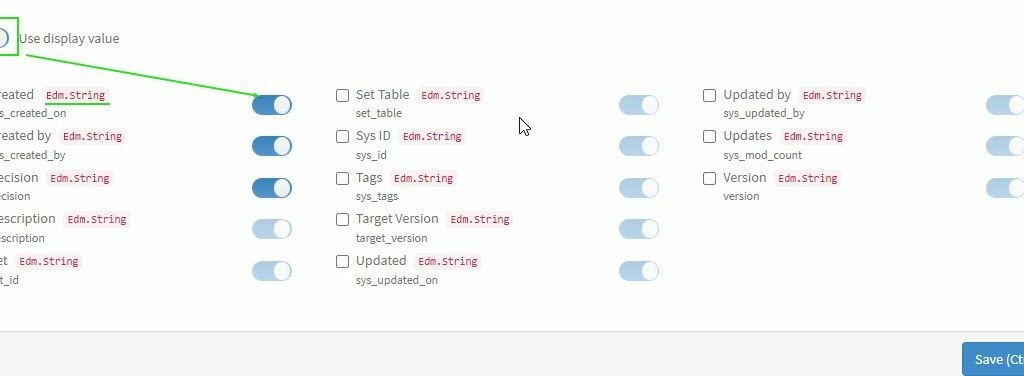
You can apply filters to the tables to further refine the export results. Click on the Filter icon and configure the desired conditions. Add conditions and click the Run button to apply the filter.
If you have a table that contains fields with a Reference type, click the “+” icon. In the opened dialog, select the fields you want to export.
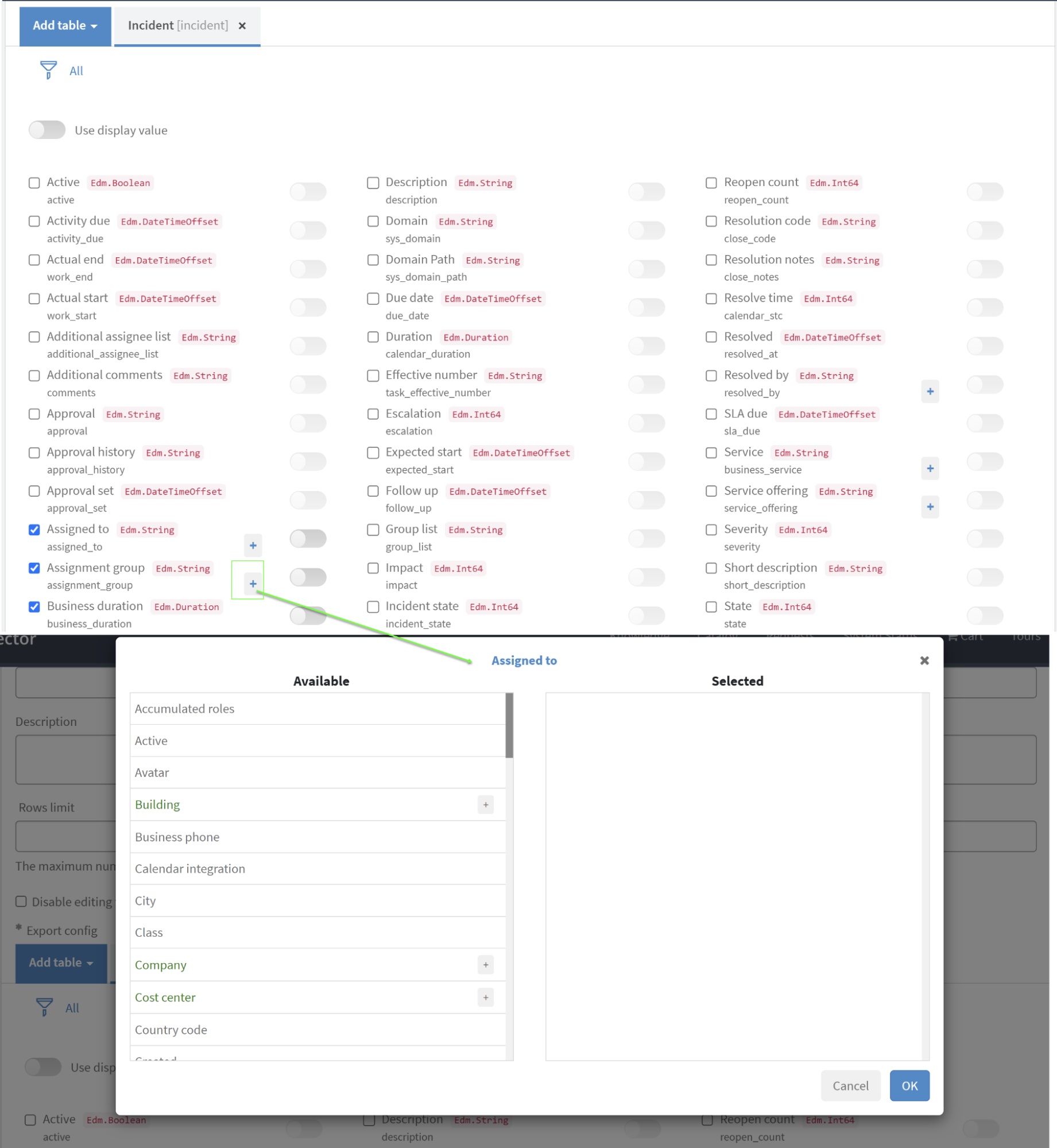
Click OK to close the dialog.
Step 4: Import ServiceNow Data into Tableau
- To import data from the Service Portal Instance-Name.service-now.com/sp:
Navigate to the table marked Data Sources located further down on the page. Apply the Search feature that has been made available. Provide the name of the data source you seek (the one you created in the previous step).

- To import data from the Tableau Connector page Instance-Name.service-now.com/tableau_connector:
Use the Show Matching or Filter Out filters to reduce the number of data sources displayed in the list. Search the filtered list until you find the relevant data source (the one you created in the previous step).
To access the context menu, perform right-click on the data source.
Choose the Copy OData feed URL option. The OData feed URL of the chosen data source will be copied to your clipboard so you can utilize it later.

Open Tableau Desktop and pick OData. In the Server area of the newly opened window, paste the copied OData URL.

Select Username and Password as your authentication type. In the appropriate areas, enter your ServiceNow username and password.
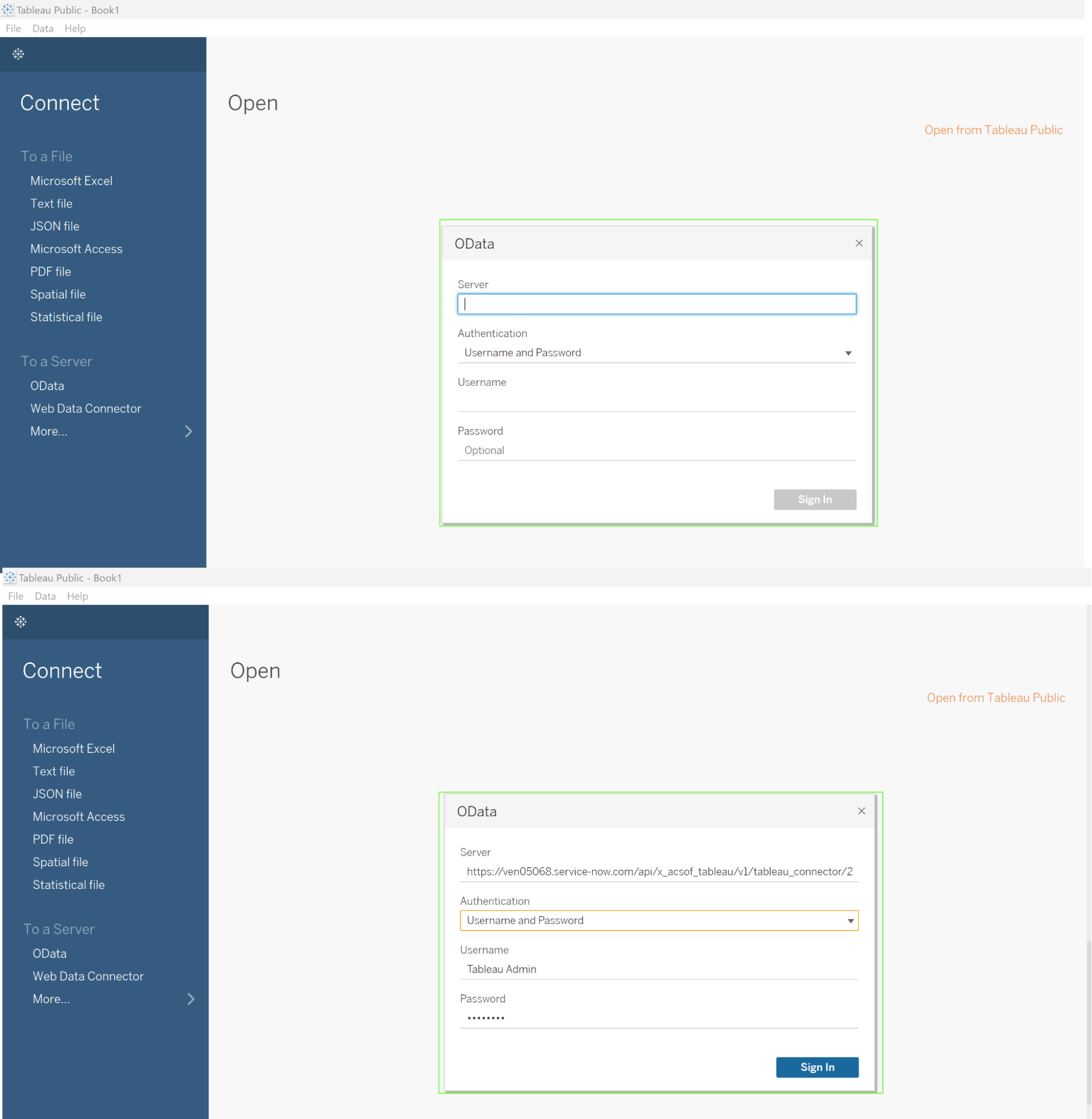
To start the import procedure, click the Sign In button. When the import is finished, you can use Tableau Desktop to create visualizations and analyze the data imported from ServiceNow.
Wrapping Up
The Tableau Connector for ServiceNow facilitates smooth communication between Tableau and ServiceNow, providing businesses with a powerful means to leverage ServiceNow data for practical analytical purposes. The statement highlights the effectiveness of the connector’s user role management and security features in maintaining controlled access and data integrity.
Advanced features such as a user-oriented interface, dot-walking, and data manipulation enable users to access and assess linked data fields efficiently. Combining Tableau’s analytical capabilities with ServiceNow’s data presents an opportunity for organizations to enhance their operational efficiency and gain a competitive advantage centered around the data era.
Recommended Reads:
- ServiceNow Integrations: Integrate ServiceNow and Other Systems Bidirectionally
- Jira ServiceNow Integration: How to Connect Jira and ServiceNow in 6 Steps
- ServiceNow to ServiceNow Integration: The Step-by-Step Guide to Setting up a Two-Way Sync
- How to Set up a Salesforce ServiceNow Integration: The Complete Step-by-Step Guide
- Zendesk ServiceNow Integration: The Complete 2023 Guide
- How to Set up a ServiceNow GitHub Integration: The Comprehensive Guide
- How to Set Up an Azure DevOps ServiceNow Integration: The Step-by-Step Guide
